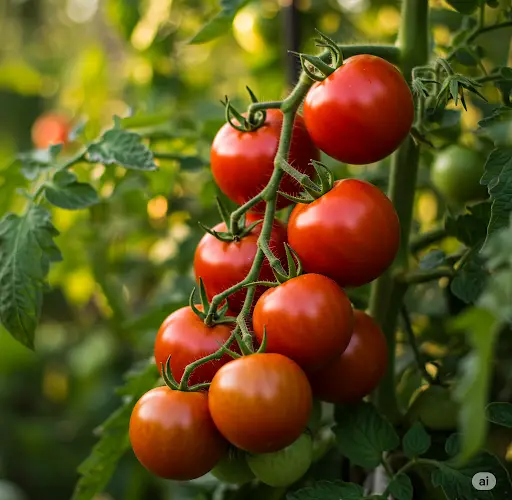Tomatoes are a staple in almost every vegetable garden. Whether you grow cherry tomatoes, beefsteaks, or heirloom varieties, one thing remains true: supporting your tomato plants properly is essential to ensure a healthy, productive harvest.
Many gardeners know the frustration of messy, collapsing plants, broken stems, or fruit rotting on the ground. That’s where a good tying method comes in. If you’ve struggled with traditional ways of staking or tying tomatoes — using string that slips, zip ties that are too tight, or clips that break — you’re not alone.
Fortunately, there’s a fast, reliable, and low-cost way to tie up your tomato plants. It provides strong support, protects the stems, and takes just seconds per plant. Once you learn this method, you’ll wonder how you ever gardened without it.
Why Proper Tomato Tying Is So Important
Tomato plants grow vigorously and, depending on the variety, can reach over six feet tall. As they grow and set fruit, the stems can bend or snap under the weight. Unsecured plants may sprawl along the ground, where fruits are more prone to disease, pests, and rot.
Tying tomato plants provides several key benefits:
-
Keeps plants upright and prevents stem damage
-
Improves airflow, reducing fungal diseases like blight
-
Exposes fruit to more sunlight for better ripening
-
Makes harvesting easier and cleaner
-
Saves space in the garden or greenhouse
But tying tomatoes needs to be done the right way — and this method simplifies everything.
The Best Method: The “Soft Loop Tie” Technique
The trick to effective tomato tying is using soft, stretchy material and tying with a figure-eight loop that supports the stem without damaging it.
What You’ll Need:
-
Soft tying material: options include garden twine, cloth strips, stretchy tape, or even old T-shirt fabric
-
Support structure: a stake, trellis, or string system
-
Scissors or pruners for cutting your tie material
You don’t need anything fancy or expensive — just something flexible, soft, and strong enough to hold the plant upright.
Step-by-Step Guide to Tying Tomato Plants
1. Choose the Right Time to Tie
Start tying tomatoes when they reach 25–30 cm (10–12 inches) tall. It’s easier to secure stems early and adjust as the plant grows. Repeat the process every 20–30 cm (8–12 inches) of growth.
2. Use Soft, Non-Damaging Material
Never use wire, twine that’s too rough, or tight plastic ties that can cut into the stem. Ideal materials are slightly elastic and gentle on the plant.
3. Make a Figure-Eight Loop
Wrap the tying material around the stem loosely, then cross it over and wrap around the stake or support on the other side, forming a figure-eight shape. Tie it off securely but not tightly.
-
One loop supports the plant stem
-
The other loop wraps the support structure
-
The cross in the middle gives flexibility and prevents rubbing
This technique holds the plant upright while still allowing it to move slightly with the wind, which helps strengthen the stem.
4. Continue As the Plant Grows
As your tomato grows taller, keep tying it up every 8–12 inches. Check existing ties occasionally and loosen or adjust if needed. Plants will thicken as they grow, and ties should never cut into the stem.
Alternative Supports: Use What Works for You
Depending on your garden setup, you can tie tomatoes to:
-
Wooden stakes driven into the soil next to each plant
-
A string system hanging from a greenhouse beam or overhead bar
-
A wire cage or vertical trellis
-
Horizontal crossbars if growing tomatoes on an espalier
No matter the system, the tying method remains the same — gentle loops that hold the plant without strangling it.
Bonus Tips for Success
-
Remove lower leaves as the plant grows to increase airflow and reduce disease.
-
Pinch off suckers (side shoots) to keep the plant focused on upward growth and fruiting.
-
Tie in dry weather to avoid spreading disease.
-
Label varieties on the support if you’re growing multiple types.
Final Thoughts
Tying tomato plants doesn’t have to be a tedious task. With this simple loop technique and the right soft materials, you can secure your tomatoes quickly, safely, and efficiently — without damaging stems or using costly gadgets.
It takes only a few seconds per plant and makes a big difference in overall plant health and fruit yield. If you’re tired of sagging stems and messy supports, give this method a try. Your tomato patch will look neat, organized, and healthy — and your harvest will thank you for it.



